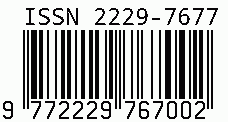
International Journal on Science and Technology
E-ISSN: 2229-7677
•
Impact Factor: 9.88
A Widely Indexed Open Access Peer Reviewed Multidisciplinary Bi-monthly Scholarly International Journal
Plagiarism is checked by the leading plagiarism checker
Call for Paper
Volume 16 Issue 4
October-December 2025
Indexing Partners



















A Case Study: Effect Of Vidangaidagajadi Lepa In The Management of Dadru Kushta W.S.R. To Dematophytosis
| Author(s) | Dr. Yogesh Maruti Bahir, Dr. Praveen kumar sajjan, Dr. Swami Parvati Alias Deepa Chandrakant, Dr. Divya Sherkhane |
|---|---|
| Country | India |
| Abstract | Skin is the largest and the most infection prone organ. Its size and the external location is more prone to most of the fungal, bacterial and other infections. In ayurveda all skin diseases are explained under the concept of kushta rogas. Dadru kushta is one of the kushta rogas, that comes under the heading of kshudra kushta, characterized by circular, reddish skin lesions accompanied by intense itching (kandu), burning sensation (daha), and oozing (srava). Dadru kushta is clinically compared to dermatophytosis in modern medicine. Commonly known as ringworm. Ayurveda offers the treatment for the dadru kushta through internal medications (shamana), external applications (lepa, dhupan), and purification therapies (shodhana). Here the lepa application is done, with the vidangaidagajadi lepa. As it has shown a very good result to the patient suffering with the dadru kushta so a case study is done. |
| Keywords | Dadru kushta, Dermatophytosis, Kshudra kushta, Vidangaidagajadi lepa |
| Field | Biology > Medical / Physiology |
| Published In | Volume 16, Issue 3, July-September 2025 |
| Published On | 2025-08-22 |
| DOI | https://doi.org/10.71097/IJSAT.v16.i3.7813 |
| Short DOI | https://doi.org/g9x3z2 |
Share this


CrossRef DOI is assigned to each research paper published in our journal.
IJSAT DOI prefix is
10.71097/IJSAT
Downloads
All research papers published on this website are licensed under Creative Commons Attribution-ShareAlike 4.0 International License, and all rights belong to their respective authors/researchers.

